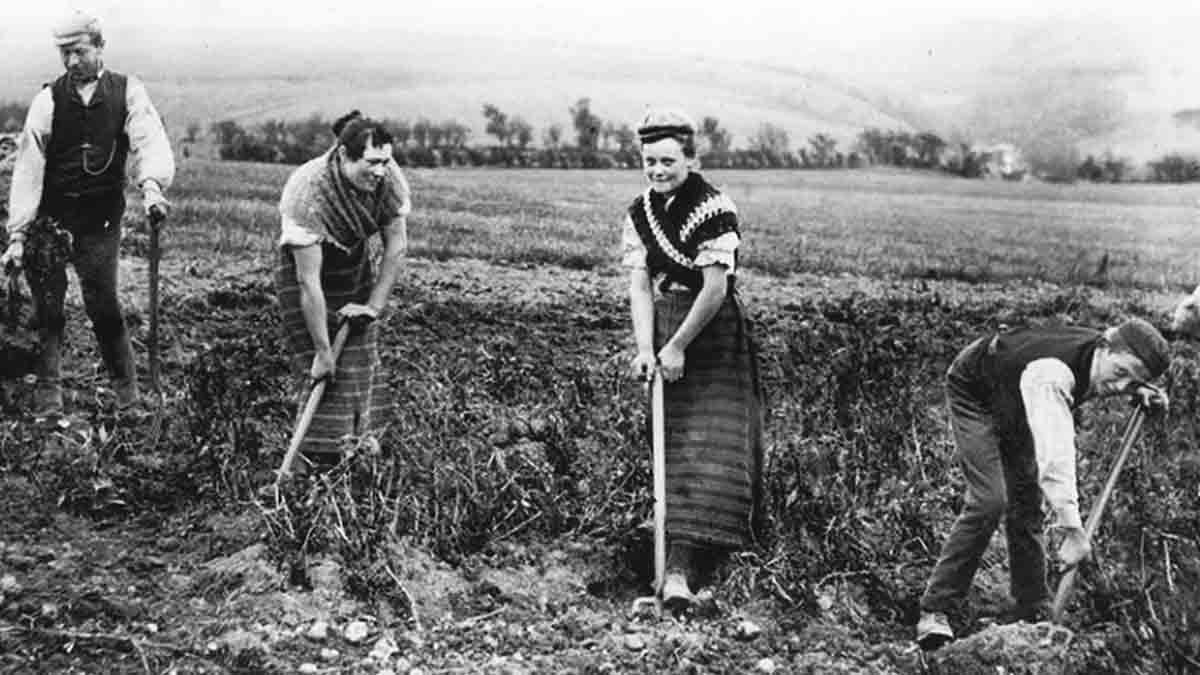BY JOHN FITZGERALD
Part 2
Fair Day at Castlemorris was an ideal time of the month to settle old scores or exact revenge on anyone who had wronged you. You would walk up to the culprit, remind him of your grievance, and then commence to beat him senseless. A blackthorn stick was useful, but your fists would do the job too. If your foe was stronger than you were, the outcome of the fight might not, of course, be to your advantage.
Many ferocious brawls erupted at the Castlemorris fair, and not just between sworn enemies. You could make new enemies quite easily by looking the wrong way at someone, eyeing a man’s wife or girlfriend, or by having a chance remark misconstrued as an insult or smart aleck reference.
Happily, most of the fights were forgotten about by the combatants within a day or two of the fair, though a few fellows had to get steel plates inserted in their heads after sustaining near-fatal injuries. One survivor of a protracted and bitter brawl that lasted half a day became known as the “Man of Steel” due to the preponderance of that metal in his skull.
Legs, arms, and eyes were lost in some of the more frenzied showdowns, but the hardy men of those days just took it in their stride, wistfully remarking: “sure that’s life” or “worse things happen out foreign.”

There was a ghost in the big house, locals believed, called the White Lady of Castlemorris. She frightened the living daylights out of people, appearing to them in the dead of night and calling their names. One man who was working in the house leaped from a top storey window when the ghost allegedly tried to grab him by the throat and kiss him.
He feared she would take him back to the Other World with her and that he might become a kind of sex slave for all eternity. Stunned witnesses, walking past the house, or working in the garden, heard him shriek as he hurtled along: “Ah Jasus, she nearly had me!”
Another man was never the same again after the ghost bumped straight into him in a corridor. He said she whispered something that had him “quare in the head for years afterwards.”
The de Montmorencys eventually left Castlemorris, to be replaced as owners of the big house by a clergyman called Walker. Paddy had to address the cleric’s two sons as Master John and Master Jeffrey. One of them later became Governor of the Punjab in India and was knighted for his distinguished service to the Empire. The Reverend Walker’s other son died on the Western Front in the Great War.
When the Walkers relinquished ownership of Castlemorris House, a German prince called Salem moved into it. He had a large herd of pigs and locals were highly amused by his habit of letting them run wild in the encircling woods. But he always had the last laugh, because they grew fat on whatever they fed on in the woodland and he made huge profits when he sold them at the market.
Paddy lamented the decline and fall of Castlemorris. The big house was demolished in 1930 after being sold off to the Forestry Department. Stones from the mighty historic edifice were recycled into the building of an extension at Bessborough House (Kildalton College), at Piltown.
It was a dark day in Paddy’s life when the magical place he had grown to love, cherish; and admire in his childhood passed into history. “It was akin to losing a friend” he sighed.
Like the many colourful characters wh o knocked about in Paddy’s youth, Castlemorris has now disappeared almost without a trace from the landscape, a part of our heritage preserved only in photographs and fading memories.

















